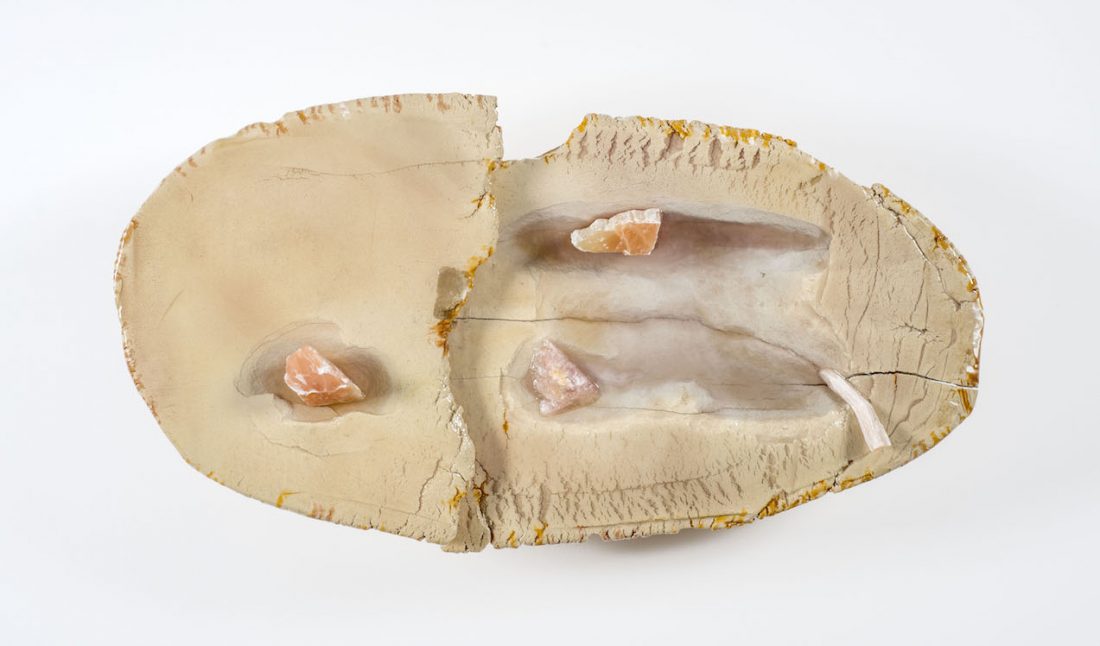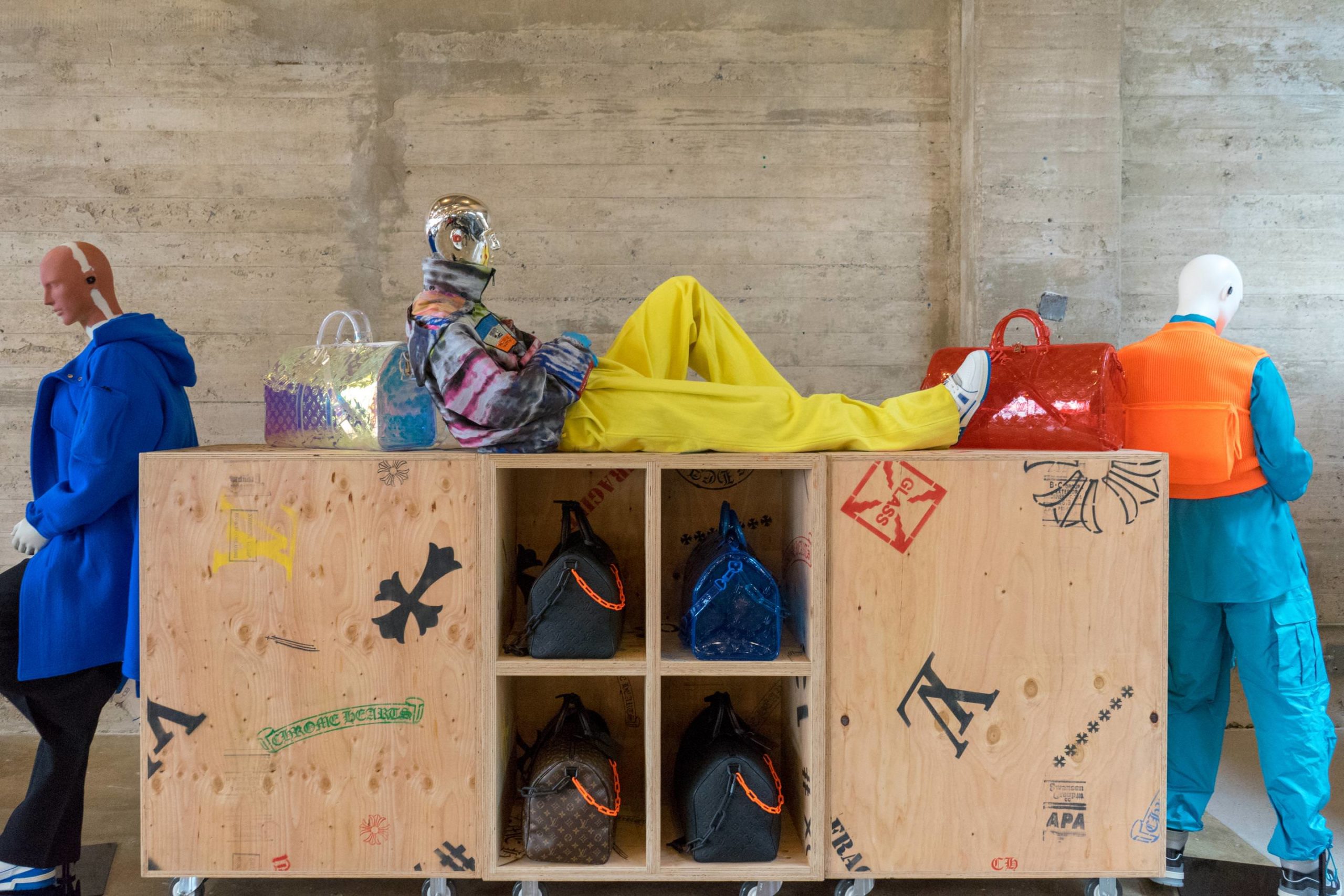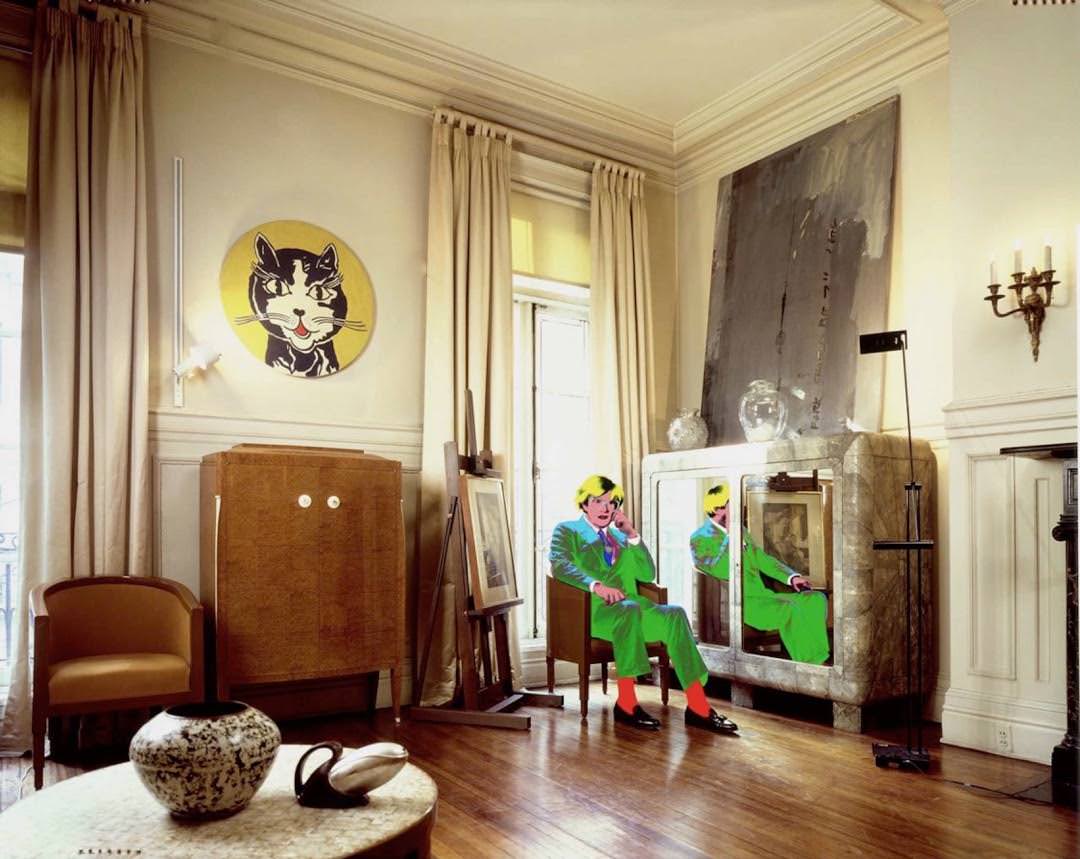Liz Larner’s solo exhibition of ceramic works at the Aspen Art Museum (February 26–June 5) recently closed, but her stainless steel sculpture X (2013) is on view outdoors in the museum’s commons through the end of October. The Los Angeles–based sculptor has long explored the physical power of the object on her viewers, working in abstract and geometric forms, often in organic materials.
Her ceramics show consisted of all wall-mounted works, similar in shape and size, and hung at eye level. Some show visible cracks and separation in the clay, and some are embedded with bits of sand or glass. We spoke with the artist about her process early last spring before the show opened.
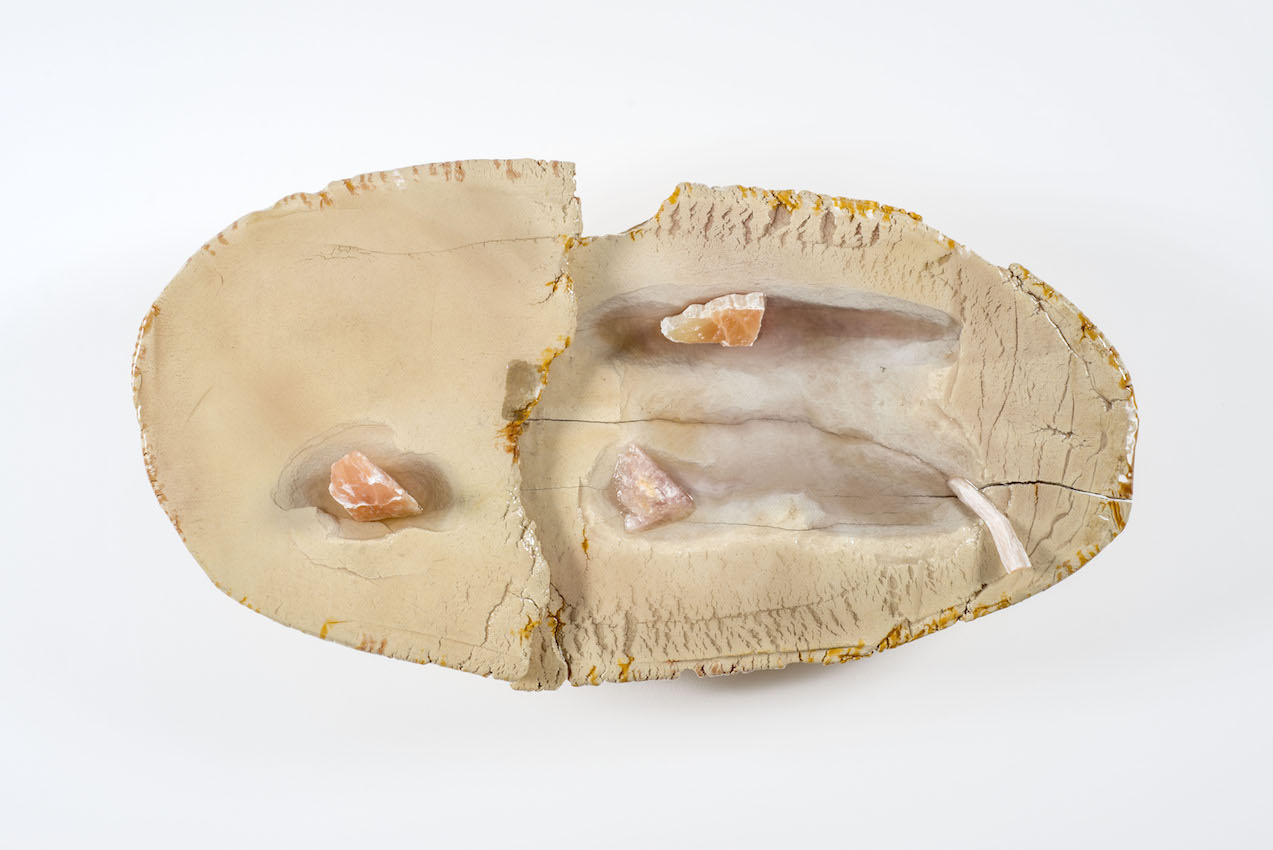 v (calefaction)
v (calefaction)WHITEWALL: How did an exhibition of only your ceramic works for the show at the Aspen Art Museum come about?
LIZ LARNER: Totally through the curator. She really wanted to show them. It’s exciting for me—it takes years to get to show just one body of work.
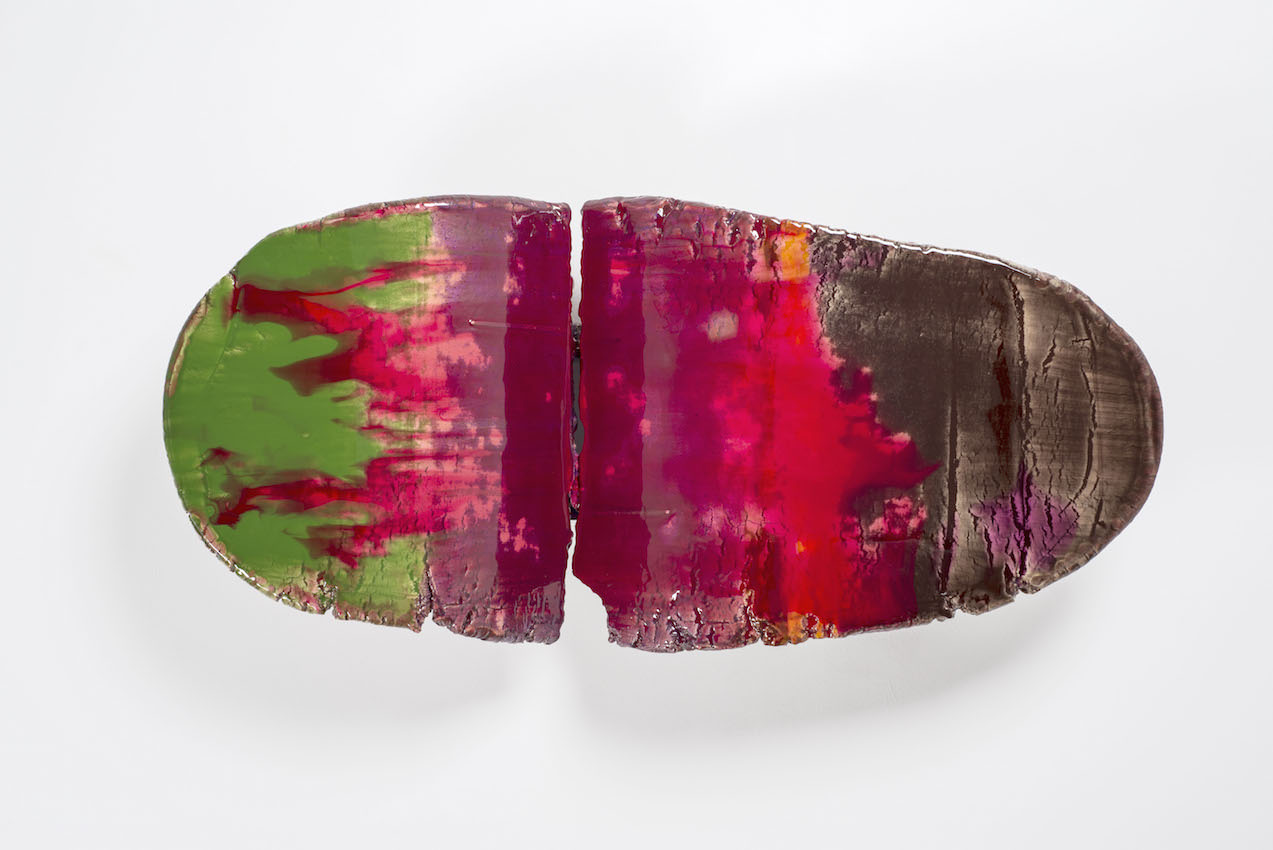 2015
2015WW: You work in so many different mediums. How did you begin working with ceramics specifically?
LL: I started quite a while ago. I never studied ceramics at school, but I always loved the material. The way I had been working was kind of more conceptual up until that point. I’d get an idea for an artwork and then if I didn’t have the skills for it, I’d learn them. I wanted to do these porcelain pieces and was able to audit some of Ken Price’s ceramics classes. He was an incredible teacher and he had such a depth of knowledge about ceramics. After that I had to build a ceramic studio because I was doing large pieces, and they were very fragile.
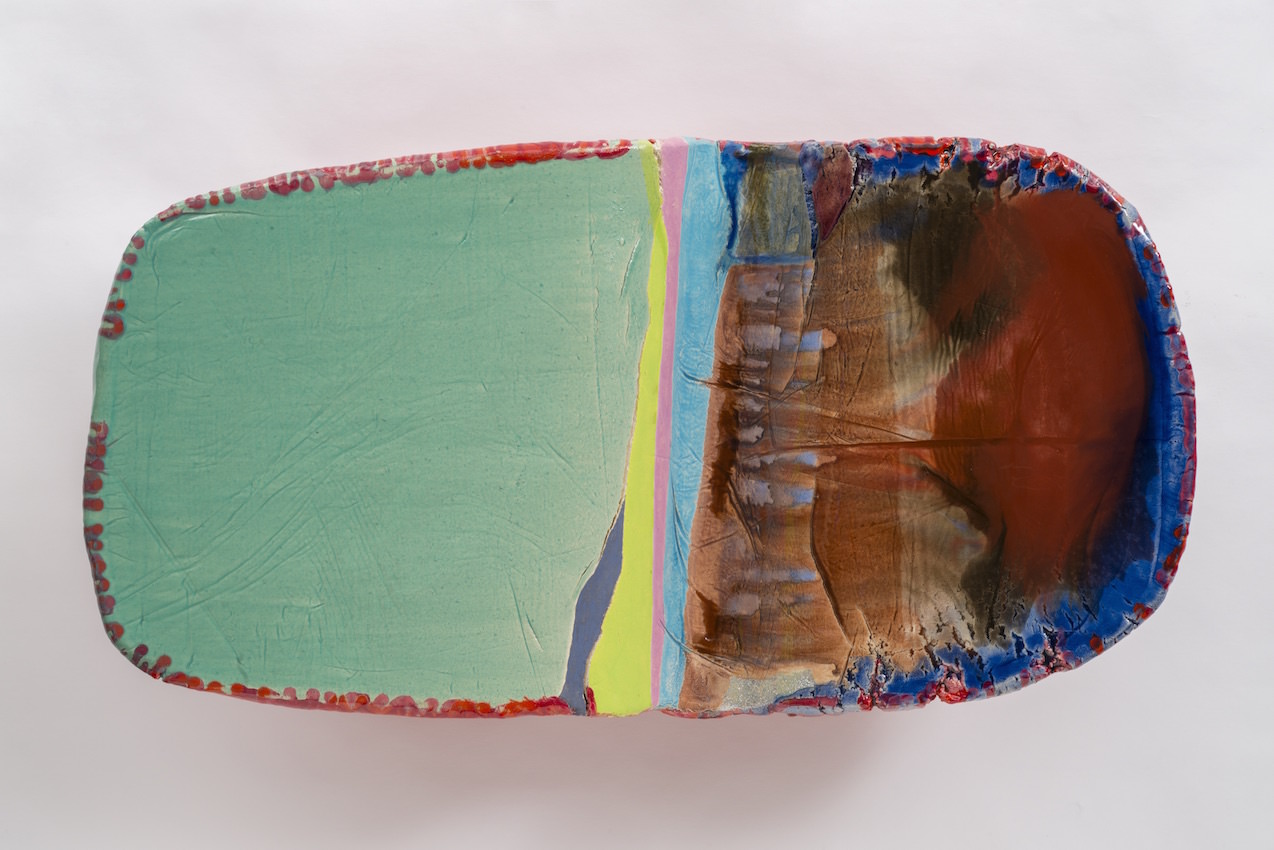 Ceramic, glaze, stones and minerals
Ceramic, glaze, stones and mineralsWW: How did you come to this specific shape and your experimentation with color and added materials?
LL: Some of the materials I’ve worked in, [afterward] I’m like, “Okay, glad that’s over,” and I don’t want to do that anymore. It was the opposite with ceramics. It’s so deep and there’s so much to learn about it. I started to make these slab pieces and then it kind of just went on from there. The first piece that was like the ones that are in the show was made in 2009 for a show that I did in the very beginning of 2011. It was a slab that was supposed to look like a very large book that had been placed on its face. I had been interested in color almost from the beginning, and I realized that this was an opportunity for me to try to work with color on each form.
 22 x 36 3/8 x 7 7/8 inches (55.9 x 92.4 x 20 cm)
22 x 36 3/8 x 7 7/8 inches (55.9 x 92.4 x 20 cm)I had to make a kiln shelf and it broke, which was kind of a surprise because it was just a slab, and when it came out I realized how emotional those kind of breaks were. It became this really great experience of having an object that already had kind of an identity or a feeling about it, this form, and then being able to come up with a palette for that, working with the very hard-to-control methods, like the epoxy that just stays liquid for hours.
I love that about the whole thing. That’s been freeing for me as a sculptor, to let that happen and let that be part of it and try to let that be what the work is about.
WW: And the choice to mount them on the wall, where does that come from?
LL: Well, it came from that first piece. I think they sort of confuse people, like, “What is this? What’s it doing on the wall?” But I love that. I think it’s really fun. Is it a painting? Not really, but we kind of look at it like that. It destabilizes a way of looking at sculptures or really painting or ceramics. I think it highlights the material in a raw state, closer to when it was dug out of the earth.
WW: Which you play even further with by adding bits of stone or mineral . . .
LL: Yes, around 2009 I got a commission for a sculpture, coincidentally, in Denver. I had all these bits of stones [from that project] and I thought, “I wonder if I put this in the slab, what will happen to it?” And so I just put the stones into the slab and fired that, and the results were very interesting. I started thinking about geology and ideas about even ceramics, making things out of the earth. And also a lot of the pigments that I used are earth minerals, even the epoxy. I was thinking about those ideas, and it seemed like a really good material to add into the ceramic work.
WW: You typically don’t show just one material in an exhibition, and in your studio work between series. What’s it like to see all these pieces in one place?
LL: In the past I really felt that materials speak. When I first started off, one of the main things about the work was a linguistic question of what something is called compared to what something is—I feel that a relationship to material is both linguistic and semantic. And sometimes things are contradictory and sometimes what something has come to mean or come to be accepted to mean can be changed or altered or reconsidered in a sculpture, depending on the material. I think that is one of the reasons I like to have multiple materials in the show, so they talk to each other.
In this show, the materials are narrowed, but the material is still really important and the conversation now is between the clay and the stone and the epoxy and the pigment and all these things that come from the same place that are related. So I think the focus is just more narrow, but what comes out of it, hopefully, is a lot to think about it.
This article is published in Whitewall‘s summer 2016 Design Issue, out now.






